Portrait of a young woman
1817.
Signed and dated lower left: Lafitte 1817.
Charcoal, estompe, black stone on paper.
H : 24.5 ; L : 19 cm.
This delicate drawing depicts a young woman in front, wearing a wide-brimmed hat. Her curly hair frames her face, and she seems pensive, gazing off-camera. She is wearing a light dress with a bow at the waist. The background is subtly suggested, with a lightly sketched landscape, leaving all attention on the figure.
Louis Lafitte was a French painter, draftsman and decorator. Trained at the Académie Royale, he won the Prix de Rome in 1791, and was the last painter sent to Italy by Louis XVI[1]. Lafitte was commissioned for decorative projects at the Château de Malmaison, as well as for imperial festivities and the emperor's wedding. He contributed to the decoration of monuments such as the Arc de Triomphe du Carrousel and the Hôtel de Ville de Paris. He also created illustrations for books, notably for the works of Racine and Fénelon. He designed models for the Manufacture de Sèvres and wallpaper motifs in collaboration with Merry-Joseph Blondel. In 1823, he was made a knight of the Legion of Honor as draftsman for the King's cabinet[2].
It was his pencil stroke that made him a hit with the engravers, the publishers of fine illustrated editions, notably Firmin Didot, for whom he produced the edition of Paul et Virginie, supervised by its author himself, Bernardin de Saint Pierre[3]. Louis Lafitte managed to weather the setbacks of changing regimes, starting his career under Napoleon I, receiving the Légion d'honneur from Louis XVIII and working on the Livre du sacre de Charles X. A neoclassical artist par excellence, he succeeded in adapting to changing contemporary tastes.
This drawing is an interesting testimony to a whole part of Lafitte's career, far from the historical subjects and allegorical compositions that are more familiar in his output. Indeed, the prolific artist worked on a wide range of subjects, including portraiture, as evidenced by the artist's posthumous sale catalog[4] and the fact that he appears in the Almanach du Commerce de Paris, as a history painter, portraitist and draughtsman.
Lafitte's characteristically incisive brushstrokes on fabrics, which made him such a success in engraved illustrations, can be seen, while the face is subtly modeled with estompe. The work on the background is equally interesting, with the planes simply suggested. In an almost romantic vein, it is possible that this drawing was intended to be engraved to illustrate a collection of poems or a novel.
[1] Catalogue des tableaux, dessins, estampes, livres, médailles, coquilles et curiosités du cabinet de feu M. Louis Lafitte [... ], Duchesne aîné, 1828.
[2] Marc Allègret, “Louis Lafitte, (1770-1828), peintre et dessinateur”, in Revue du Souvenir Napoléonien, no. 439, p. 63.
[3] Véronique Mathis. Louis Lafitte : un peintre d'histoire de la Révolution à la Restauration. History. Normandie Université, 2020. French.
[4] Catalogue des tableaux... op. cit. p. 13.





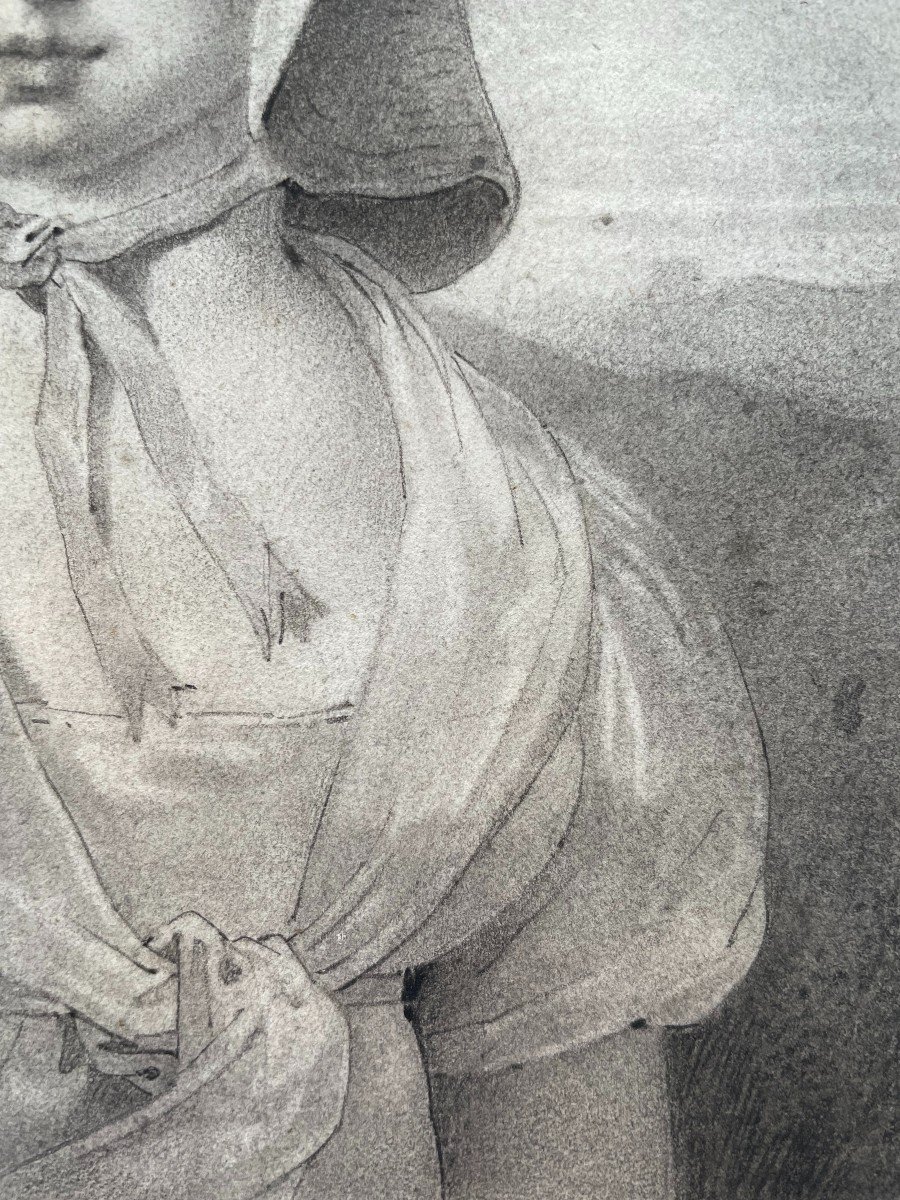





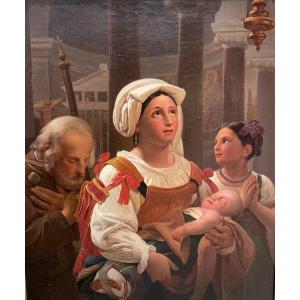





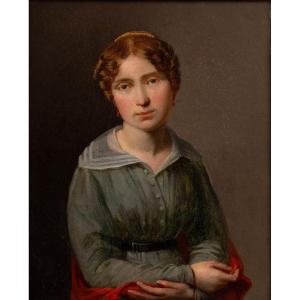


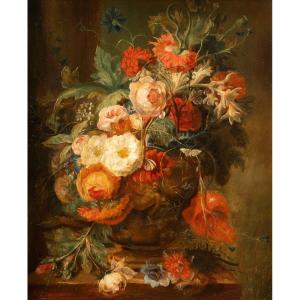




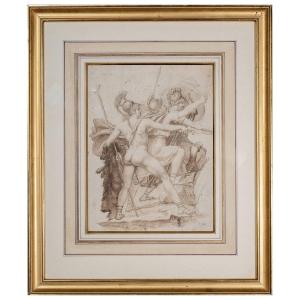
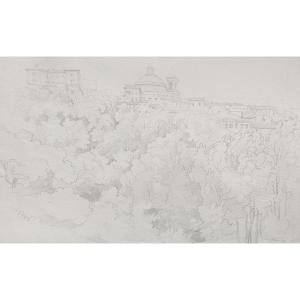



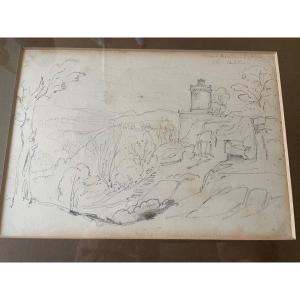



 Le Magazine de PROANTIC
Le Magazine de PROANTIC TRÉSORS Magazine
TRÉSORS Magazine Rivista Artiquariato
Rivista Artiquariato